

Suunto Blog
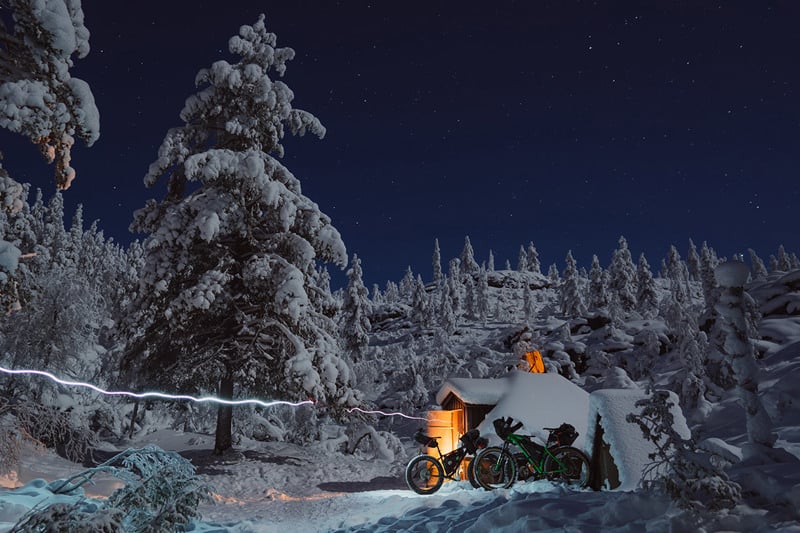
7 adventure films to watch over the holidays
Over the course of 2021 we’ve had the pleasure of being involved with some excellent adventure films. Now the holiday season is upon us, we decided to curate our favorite short films for you so when you have some downtime soon you can kick back and watch them. Scroll down for our seven favorites!
From Rails to Trails
Just watching this will make you shiver. Our very own bike lover Antti Laiho and his buddies Timo Veijalainen and Erkki Punttila went on an overnight bikepacking tour in the Finnish Lapland in the middle of winter. The landscapes look like something from a fairytale. Truly magical.
Rails to Trails from Kona Bikes on Vimeo.
Peak creators
Since forever there’s been a connection between creativity and the great outdoors. In this series of films we talk to an artist, a photographer, an architect and a trail builder about their creative process and how the outdoors inspires them.
Canary in the coalmine
Decorated technical diver, explorer and filmmaker Jill Heinerth explores the veins of the Earth. She sees close up how the impacts of humanity are affecting our planet so considers herself a canary in the coalmine.
How fast can Kilian run a vertical k?
This film shows just how much the Kilian pushes himself during his lightning fast ascents. He might be the GOAT mountain athlete, but that doesn’t mean it’s a walk in the park for him. Watch him attempt to break the fastest vertical k record and push his lungs to their limit.
Immersed
Swedish slopestyle mountain biker Emil Johansson won the 2021 world championship and is now the most successive slopestyle rider in history. But it very nearly wasn’t to be. A mysterious autoimmune disease came close to derailing his dreams. This film is about his journey.
Finding myself
Suunto ambassador Sami Sauri fell in love with cycling as a teen and says it gave her a new purpose in life. Since then she has done epic bikepacking tours across the US, and elsewhere. When she’s not riding, she might be out surfing or trail running.
Arctic Lines season two
Finnish freerider Antti Autti has embarked on the second season of his Arctic Lines project, the goal of which is to ride 30 lines above the Arctic Circle. He and his team document each trip and release a film about the experience. Watch as they face brutal cold, the polar night and their physical limits in the pursuit of sweet, sweet rides.
Lead images by Jaakko Posti Photography
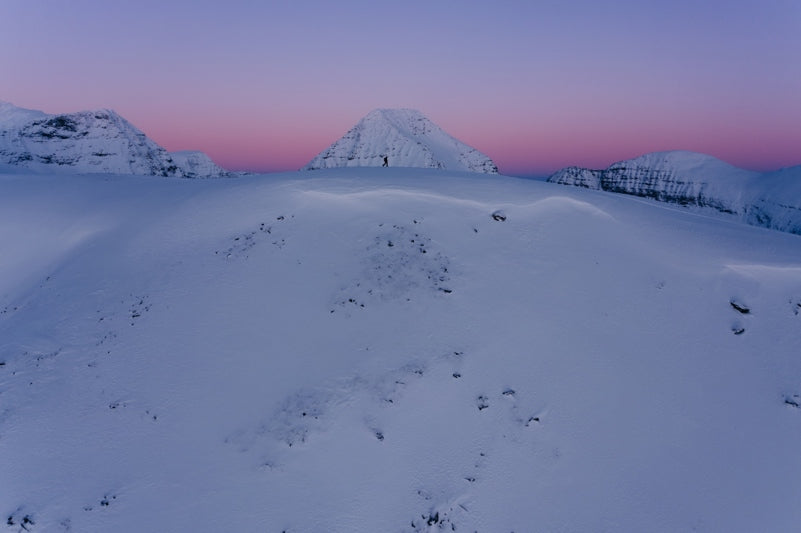
Calling winter sports fans: help researchers reduce avalanche fatalities
A first of its kind research project in Norway is inviting Suunto users to help them gain insights into how we make decisions in avalanche terrain, and what we can do to reduce avalanche accidents.
The Center for Avalanche Research and Education (CARE) at UiT the Arctic University of Norway wishes to follow 10 000 winter sports fans for 10 years to examine how we make decisions in avalanche terrain, and how we can all be safer.
To join the CAREpanel and help with this important, and first of its kind longitudinal study, you must be involved in a winter sport like skiing, snowboarding, ice-climbing, snowmobiling, hunting and so on.
Photo by Audun Hetland
How to contribute
You can contribute by joining the longitudinal study at www.carepanel.no and also by sharing your activity data with the avalanche researchers at CARE. To send your activity data to the researchers, go to the activity in Suunto app, tap the three dots on top right and select 'Export GPX workout'.
Why it’s important
Nine out of 10 fatal avalanche accidents are triggered by the victim or someone in their party. According to EAWS, the European Avalanche Warning Service, there were 130 avalanche related fatalities in Europe alone in 2020-2021. By understanding and improving decision making CARE aims to save lives.
Normal short term studies do not provide much in the way of insights into human factors and their impact in triggering avalanches. By following such a large number of people over time the CAREpanel research project will reveal how education or experience impact people’s perception of risk and their following decisions.
Photo by Audun Hetland
What’s involved
The carepanel consists of an introductory survey and a yearly survey. The surveys take about 15 minutes to complete. The CARE panelist will also be asked to join a GPS survey. If you share your GPS data you will get an offer to answer a few questions about the tour in avalanche terrain.
The researchers will run the GPS track through a terrain model and compare it with the current avalanche conditions from the warning service varsom.no. This will let them create a rough estimation of exposure risk under the current conditions. In the future the researchers also aim to provide feedback to the participants based on their GPS tracks.
Some participants may also be invited to join additional short studies. These are optional.
How to sign up
To become a CARE paneilist, first read important information for participants. Then complete the CARE panel recruitment survey.
Lead image: Jaakko Posti / Arctic Lines
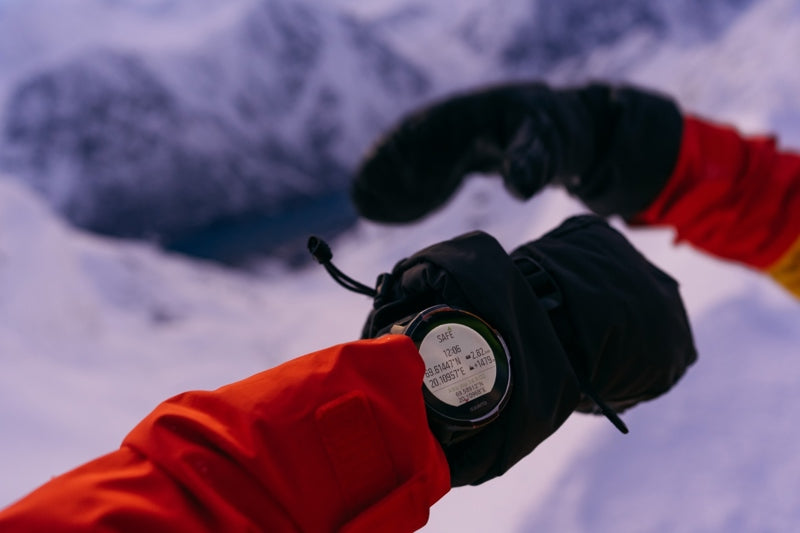
6 tips for mountain navigation
Suunto athlete and intrepid Finnish freerider Antti Autti is bracing himself for days of bone chilling temperatures as he searches for snowboarding lines in mountains above the Arctic Circle.
Season two of his Arctic Lines project is underway. The goal is to ride 30 unique, unridden or iconic lines in the frozen wilds of northern Finland, Sweden and Norway. Getting to each line is no walk in the park. He and his crew must contend with long approaches, minus temperatures, the poor visibility of the Arctic’s polar night, difficult to predict snow conditions, blizzards and obstacles.
In this article, Antti guides us through how he breaks down each trip and how he navigates to each line and back.
Watch each episode of Arctic Lines as it drops here!
Have a plan
This sounds obvious, but the importance of having a thought-through and agreed upon plan can’t be overstated. Having a plan b is also important. Make sure each person in your group knows the plan and has agreed to it. To achieve this, Antti creates routes in Suunto app and shares them with his crew for feedback. If everyone is happy, he then creates GPX files and syncs them with their Suunto 9 Peak watches.
Click here for Antti’s 8 planning steps!
Start cool
You reach the road end and get out of your toasty warm car and into the biting cold air. Don’t make the mistake of piling too many layers on too soon. It’s better to start a little cold and then warm up. Otherwise you’ll have to stop after 20 minutes to remove layers.
Let your watch guide you
“It’s really helpful to have the route planned in advance and to follow it on our watches,” Antti says. “When I’m at home and draw the route in Suunto app I can’t see all the obstacles we’ll encounter on the ground. But following the route with my watch means I can go off route by 100 m to avoid an obstacle and it will guide me back. It’s a huge help.”
Should you decide to change your plans and follow a predefined plan B, with your Suunto 9 you can also change the route you navigate during an activity. Just long press the middle button to enter the 'options' and the 'navigation' menu: there you can select the new route you want to follow. And if you do wander further away from your route, you can always zoom out on the navigation view. Simply long press the middle button on a navigation screen and zoom out – or in – with the buttons to see your position related to your planned route.
Read here how to navigate with a Suunto 9.
Break it down
Antti breaks down each trip into five sections: below the treeline, observation, the traverse, the ride and, lastly, the return. Each section has a different focus and tasks.
Below the treeline: Important to conserve energy and follow the easiest way in as possible. This is why it’s important to start on time so there’s no rush to get in.
Observation: At the treeline, Antti and his crew have a 30 to 45 minute break to observe and assess the situation. “At the treeline we can see if the route we made in Suunto app is going to work,” Antti says. “This is when we make critical decisions about which route to take to get to the line. The shortest way might be more exposed. The longer way might be safer, but use more energy. This is why we take our time here to make a good decision because after that it’s full on.”
The traverse: Antti tries to follow a route that affords him protection from snow or rock fall. Where possible he tries to stick to climbing ridgelines.
“This is when we approach the face and climb to the top of the line,” Antti says. “We need to do that quite fast and this is where we use the most energy. It’s also when we get to know how the snow is and make a decision whether to go ahead or pull the plug.”
The ride: “If I plan a lot ahead, then the descent is super nice because all I need to do is ride really well,” Antti says. “If the conditions are good, it’s all fun, but if not it can be really tricky. It’s always hard to know how the ride will be. If you have a big face with multiple options, then you have to be able to change your original plan.”
The return: After they’ve ridden the line he and his crew are usually quite pumped and excited. While this is great, if they get carried away by it this is when mistakes can be made. “When we get excited after the line it’s always good to stop and regroup a little,” Antti says. “When you’re playing in the mountains, it’s so important to regularly regroup and refocus.”
Even if you are not following a preplanned route, the breadcrumb trail on your Suunto is super useful during the return: it will help you get back on your skintrack and the trailhead where you started. Read about Suunto's Find Back feature here.
Be prepared to change plan
Being exposed to cold in the mountains is serious business. It’s all about managing time and energy, and responding to unforeseen challenges. Stubbornly sticking to a plan can be dangerous. Antti advises to keep an open mind, and to check in regularly with your group to see how you are all doing and whether any course correction is required.
Keeping tabs on sunrise and sunset times is especially important in the mountains: learn how to use sunrise and sunset alarms in your watch here.
Have a safety back up
Antti uses the SuuntoPlus Safe - My Location feature on his watch. There is always a risk that something goes wrong and they need to call for help. This feature for Suunto 9 watches provides information that they can give to a rescue team. It provides location info and the direct distance and altitude from the starting place.
Antti also takes his smartphone with him as a backup in case he needs to reassess the route.
Watch Arctic Lines here!
All images by Jaakko Posti
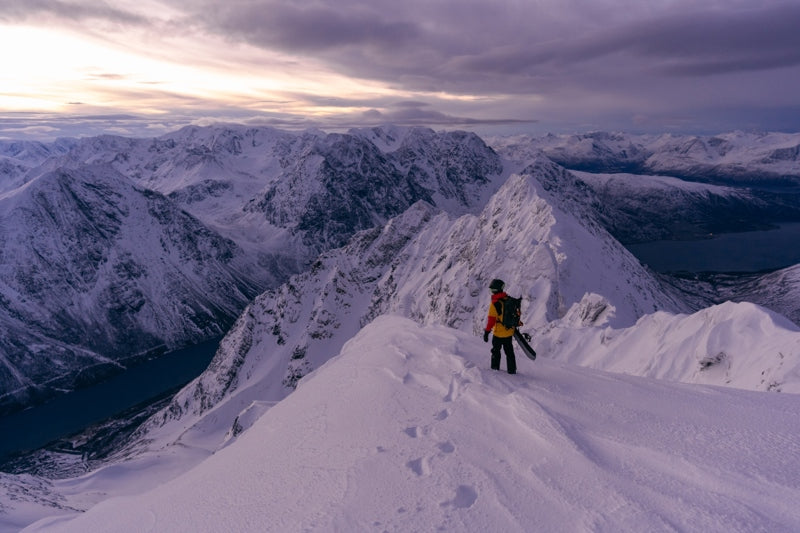
8 steps for planning trips in the mountains
Over the last few months Antti Autti has been doing one of his favorite things: pouring over maps of northern Norway, Sweden and Finland looking for contours that suggest there’s an incredible line there waiting for him to freeride.
After identifying a number of candidates, he developed a plan for the second season of his Arctic Lines project; the goal of which is to hike and ride 30 iconic backcountry lines north of the Arctic Circle. Each trip is carefully measured against the two guiding values of the project: safety and sustainability.
Antti will soon set off into the frigid Nordic north to try to get in a trip or two before the polar night descends, and the sun no longer rises above the horizon. We caught up with him just before he left and asked him to take us through his planning process and how he keeps he and his team safe while also trying to minimize the project’s carbon footprint.
Watch each episode of Arctic Lines as it drops here!
Route planning on the go with Suunto app.
Step 1: Study the maps
This is where it all begins. Antti uses Suunto app and FATMAP to study an area, become familiar with the terrain and to look for features that suggest there’s a line worth riding. Using 3D maps on Suunto app, he tries to find what might be aesthetically interesting or unique, and then looks at how to approach it safely, the nearest road end and town.
“I’ve been using Suunto app a lot, with the new satellite images, to get an idea of whether the line has potential or not,” Antti says. “We also use the heatmap to see how people have been moving in the area as this can help us to find the right route. Having a 3D map means we can think about what the line will look like and that’s an important part of the planning.”
Step 2: Selecting a line
“It’s a creative process,” Antti explains. “It really comes down to the feeling I get when I look at it on the map. If the line makes me curious about how it would feel to snowboard down it, then I know it might be interesting to do. It also has to have a sense of challenge. The exploration, steepness, length of tour, the lack of sunlight, lack of daylight, these are challenges you have to plan around and this makes it more interesting.”
Step 3: Getting feedback
On each trip of Arctic Lines, there’s a team of three or four who accompany Antti: a videographer, someone he rides with, and a safety person. Once Antti has selected a potential line he shares it with his team and asks for their feedback. How would we film this trip? Is it too remote? Does it look too gnarly? Would this be fun?
“We create a GPX file, based on maps in Suunto app, and send it to my crew for feedback,” Antti says. “They let me know what would be good for them.”
Learn how to import GPX files in Suunto app for iOS and for Android.
"Having a 3D map means we can think about what the line will look like and that’s an important part of the planning," Antti says.
Step 4: Evaluating snow and weather
Once Antti and his crew have decided on a line, the next step is determining what conditions they’d like to do it in.
“We have three options,” Antti says. “A stable snowpack with very good quality snow, but poor weather or, alternatively, sunny weather and an unstable snowpack or great weather and a stable snowpack. There are just a handful of days when everything is sort of perfect.”
With a stable snowpack we have the chance to try something with more risk, like a couloir. We can do that in grey weather or in a snowstorm. If we go in sunny weather, we might have a less stable snowpack, but because we can see risky pockets it’s easy to avoid them. But if the snow cover is really unstable - if there’s a chance of triggering a big avalanche - everything is off. But if we know we can avoid those locations then we can keep going. Route choice is super important.”
Step 5: Factoring in the crew
With a sense of the snow conditions, the route and the risk involved, Antti then factors in who he will be skiing with and who will be in the crew, and whether they all have the level of experience, skill and endurance fitness to pull it off.
“If we have a big mission in the interior, I can’t take a less experienced person with me,” he says. “It’s important to know everyone’s experience level, and their mental and physical condition.”
Once Antti has planned a route on Suunto app he shares it with his crew.
Step 6: Balancing safety and sustainability
These two guiding values are in tension with one another. What’s safer is often less sustainable and vice versa.
“If it’s a 30 to 50 km approach, then we have to have a super strong crew because that’s a 100 km round trip,” Antti says. “You have to be physically and mentally strong to do it. If there’s even the smallest chance one person isn’t fit for it, then we might have to use alternative options, like snowmobiles. Sustainability is hugely important, but sometimes we have to compromise for the sake of safety.”
Step 7: Deciding on Plan B
This involves considering the snow and weather conditions, the available time window, and deciding the best way in and to the top of the line. It’s smart to map out the Plan B route on Suunto app and share it with the rest of the team. “If there’s too much time pressure we might just cancel because that’s when mistakes can get made,” Antti says.
Step 8: Scout day
“To get a better idea about the situation, I don’t go straight into the line,” Antti says. “I will take my time to plan. Then we have the basic ideas, but we still have to take a look and build up the confidence by knowing the pack and understanding as much as we can.”
Check out Antti’s Arctic Lines adventures here!
All images by Jaakko Posti
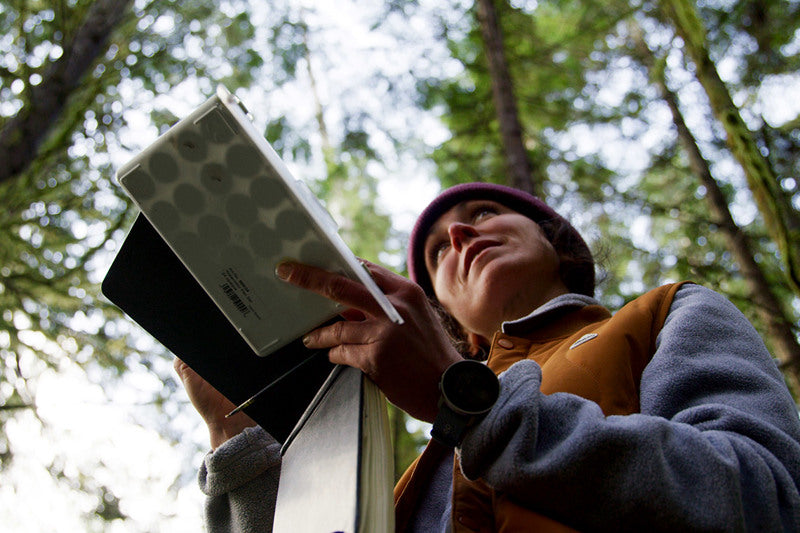
Peak Creator Series – The Artist
A snowboard guide by winter, and a passionate artist inspired by nature Jessa Gilbert lives to be in the outdoors.
This is the fourth in our Peak Creator film series, which celebrates creative people inspired by the great outdoors. We talk to four creators and find out what inspires their creative work.
As a teen, Jessa learned to snowboard on the Catamount in the Catskills in upstate New York and before she knew it she was competing in freestyle. She racked up five knee surgeries by the time she was 27 and was eventually told she could never run or board again.
She thought packing her painting kit might force her to slow down - it didn’t - but it did result in her capturing the stunning landscapes she shreds in and has led to her creating graphics for brands.
“We are in a time where we are starting to remember that public art is important,” Jessa says. “The beauty of public artwork is that you are creating artistic environments.”
Click play below and watch Jessa share her creative inspiration.
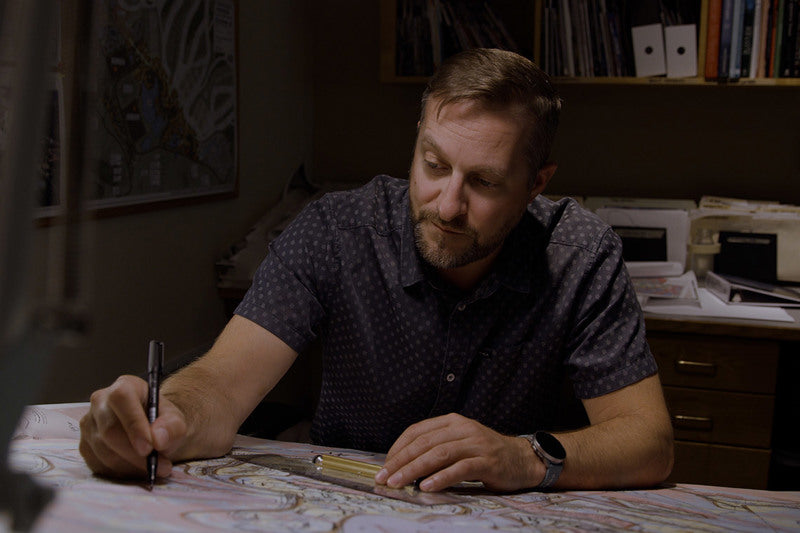
Peak Creator Series – The Architect
In this third film of our Peak Creator series we profile landscape architect Ryley Thiessen who shares how he designs mountain resorts that bring people closer to nature.
The Peak Creator film series celebrates creative people inspired by the great outdoors. We talk to four creators and find out how nature inspires them.
Ryley specializes in designing four season resorts around the world. He grew up in the countryside and from an early age knew he wanted to work with the earth.
The essential principle for this work is balance: “It’s working with nature and finding that balance where you’re not taking too much,” he says.
Click play below and watch Ryley share how he approaches his work.














































































